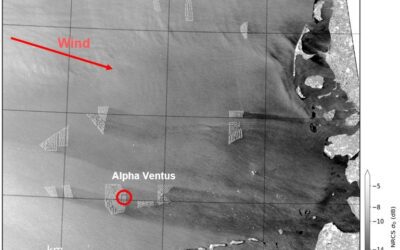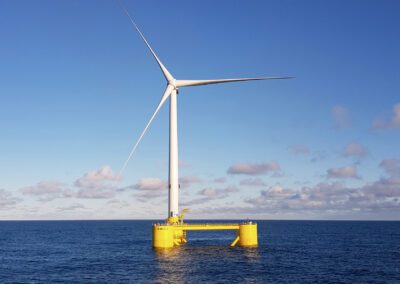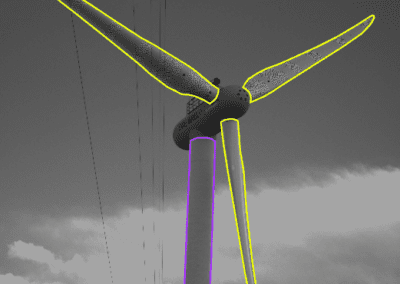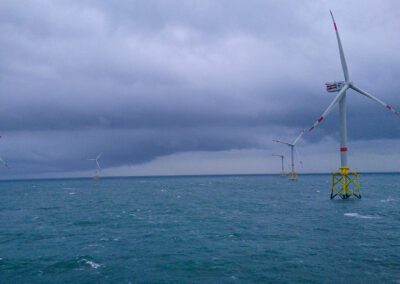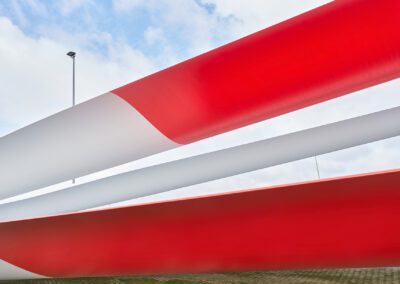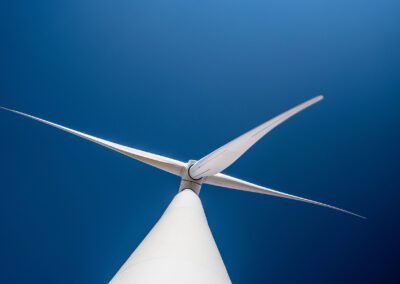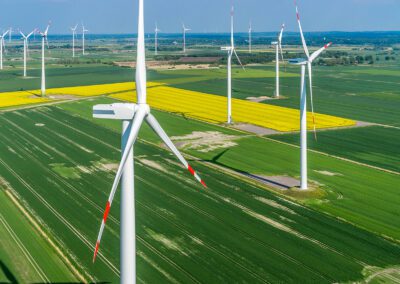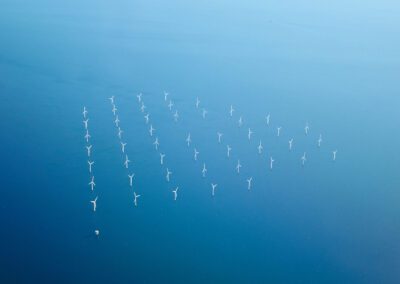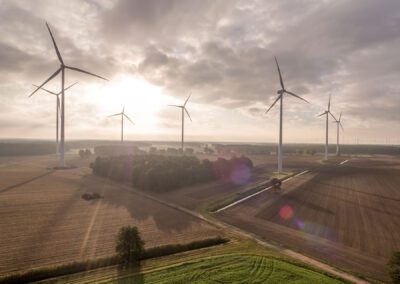


Aktuelles
Mehr Ertrag in Offshore-Windparks: Messkampagne im Projekt C²-Wakes startet
Das Fraunhofer-Institut für Windenergiesysteme IWES untersucht gemeinsam mit seinen Projektpartnern RWE, ForWind (Universität...
ForWind Wind Physics Symposium 2024
Das ForWind Wind Physics Symposium 2024 findet am Freitag, 14. Juni 2024 im WindLab auf dem Campus Wechloy der Carl von...
ForWind wird assoziierter Forschungspartner von FME NorthWind
ForWind hat sich offiziell der norwegischen FME NorthWind als assoziiertes Forschungspartnerinstitut angeschlossen. Die Stärkung...
ForWind – Unsere Mission
Wir sind Windenergieforschung
ForWind ist das gemeinsame Zentrum für Windenergieforschung der Universitäten Oldenburg, Hannover und Bremen.
Im Energie-Forschungszentrum Niedersachsen (EFZN) nimmt ForWind die EFZN-Forschungslinie Wind wahr. Das EFZN ist ein gemeinsames wissenschaftliches Zentrum der Universitäten Braunschweig, Clausthal, Göttingen, Hannover und Oldenburg.
Gemeinsam mit dem Deutschen Zentrum für Luft- und Raumfahrt (DLR) und dem Fraunhofer-Institut für Windenergiesysteme IWES bildet ForWind den Forschungsverbund Windenergie.
ForWind
WINDENERGIEFORSCHUNG
ForWind bearbeitet die wichtigen Fragen zur Windenergieforschung in zahlreichen Forschungsprojekten. Das wissenschaftliche Spektrum reicht von der Meteorologie über die Materialforschung bis hin zur Integration von Windstrom in das elektrische Netz. Forschungsschwerpunkte liegen in den Bereichen Ingenieurwissenschaften, Physik und Meteorologie, Informatik und Wirtschaftswissenschaften.
Wie lässt sich die Turbulenz im Nachlauf von Windkraftanlagen möglichst genau erfassen? Welche Belastungen wirken auf die Tragstrukturen von Offshore-Windenergieanlagen? Welche Chancen bietet die Windkraft für eine dezentrale Energieversorgung der Zukunft?
Hier erfahren Sie mehr über unsere Forschungsbereiche Ressource Wind, Maschine & Rotor, Tragstrukturen, Netz sowie Produktionstechnik.
Laufende Forschungsprojekte
Über anwendungsnahe Projekte trägt ForWind die Erkenntnisse aus der Grundlagenforschung in die Wirtschaft. Wir haben in 20 Jahren viel Erfahrung in Verbundprojekten mit einer großen Anzahl von Industrie- und Forschungspartnern gesammelt.

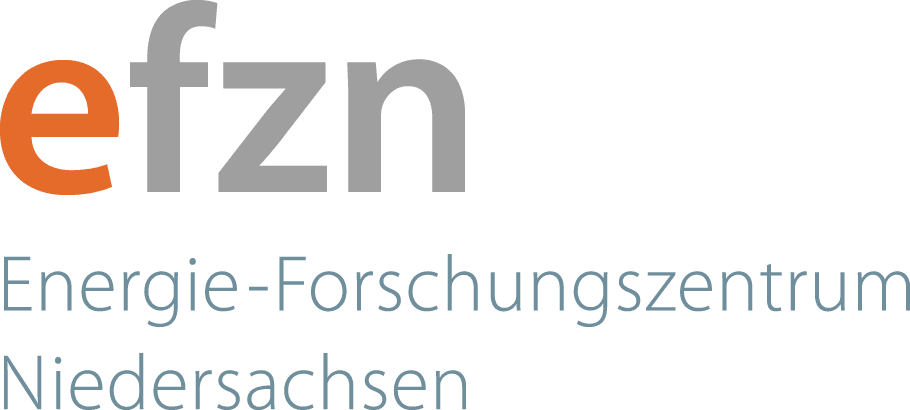
Stark im Netzwerk
Die Windenergieforschung im Nordwesten wird von ForWind zusammengefasst und verbindet 30 Institute und Arbeitsgruppen der Universitäten Oldenburg, Hannover und Bremen. Damit bildet ForWind einen bundesweit einmaligen Forschungsverbund und deckt ein breites Spektrum wissenschaftlicher Themen ab. Forschungsschwerpunkte liegen in den Bereichen Ingenieurwissenschaften, Physik und Meteorologie, Informatik und Wirtschaftswissenschaften.
2003 wurde ForWind mit Unterstützung des Niedersächsischen Ministeriums für Wissenschaft und Kultur (MWK) gegründet. Die Windenergieforschung an den Universitäten Oldenburg und Hannover ist seitdem in ForWind zusammengefasst. 2009 kam die Universität Bremen als neuer Partner hinzu, wodurch ForWind sein Forschungsspektrum noch einmal deutlich erweitern konnte. ForWind wird nach wie vor vom MWK gefördert.

Wissenschaftliche Qualifikation
An allen drei beteiligten Universitäten werden Fachkräfte für die Windenergiebranche der Zukunft wissenschaftlich ausgebildet.
ForWind ist Mitinitiator des European Wind Energy Master (EWEM), einem transnationalen Masterstudiengang mit Doppelabschluss, der von 2012 bis 2018 von der Europäischen Kommission als Erasmus Mundus Masterkurs gefördert wurde.
Assoziierte Partner aus Forschungsinstituten, Industrie und NGOs bilden ein starkes Unterstützernetzwerk für unsere Studierenden und Promovierenden.
Unsere Netzwerke
ForWind nimmt im Energie-Forschungszentrum Niedersachsen (EFZN) die EFZN-Forschungslinie Wind wahr. Das EFZN ist ein gemeinsames wissenschaftliches Zentrum der Universitäten Braunschweig, Clausthal, Göttingen, Hannover und Oldenburg.
Gemeinsam mit dem Deutschen Zentrum für Luft- und Raumfahrt (DLR) und dem Fraunhofer-Institut für Windenergiesysteme (IWES) bildet ForWind den Forschungsverbund Windenergie (FVWE).
Unsere ForscherInnen sind darüber hinaus an zahlreichen internationalen Initiativen und in Organisationen tätig, die auf das Ziel einer zukünftigen klimagerechten Energiegewinnung ausgerichtet sind.
Studium und Weiterbildung
Über anwendungsnahe Projekte trägt ForWind die Erkenntnisse aus der Grundlagenforschung in die Wirtschaft. Neben der wissenschaftlichen Begleitung industriell ausgerichteter Projekte bietet ForWind mit dem Weiterbildenden Studium Windenergietechnik und -management das bundesweit erste akademische Weiterbildungsprogramm speziell für die Windenergiebranche an.
Das Weiterbildende Studium Windenergietechnik und -management (Windstudium) richtet sich an Fach- und Führungskräfte, die ihre Zukunft in der Windenergiebranche auf ein solides Fundament aus Fachwissen und Schlüsselqualifikationen stellen wollen.

